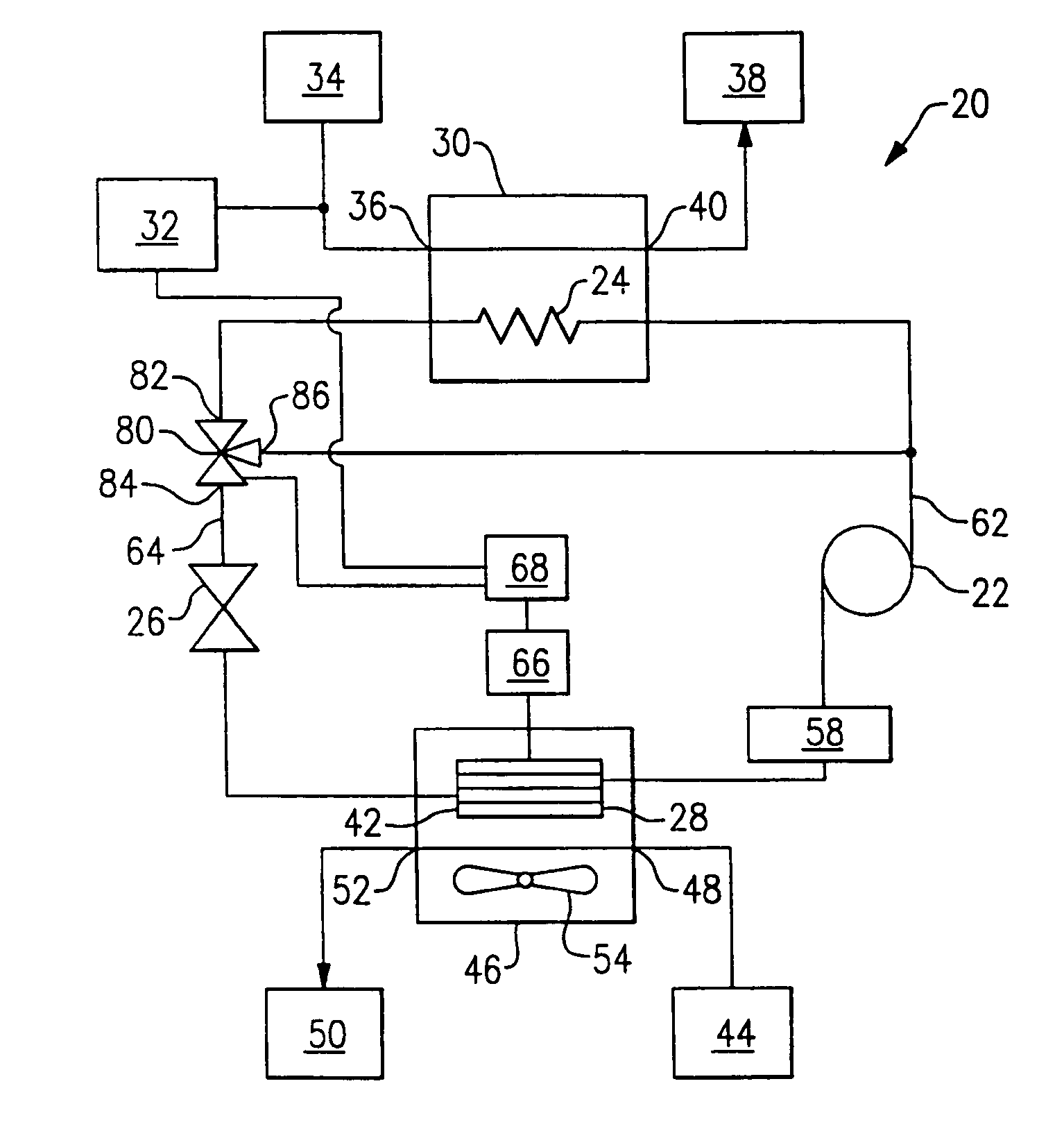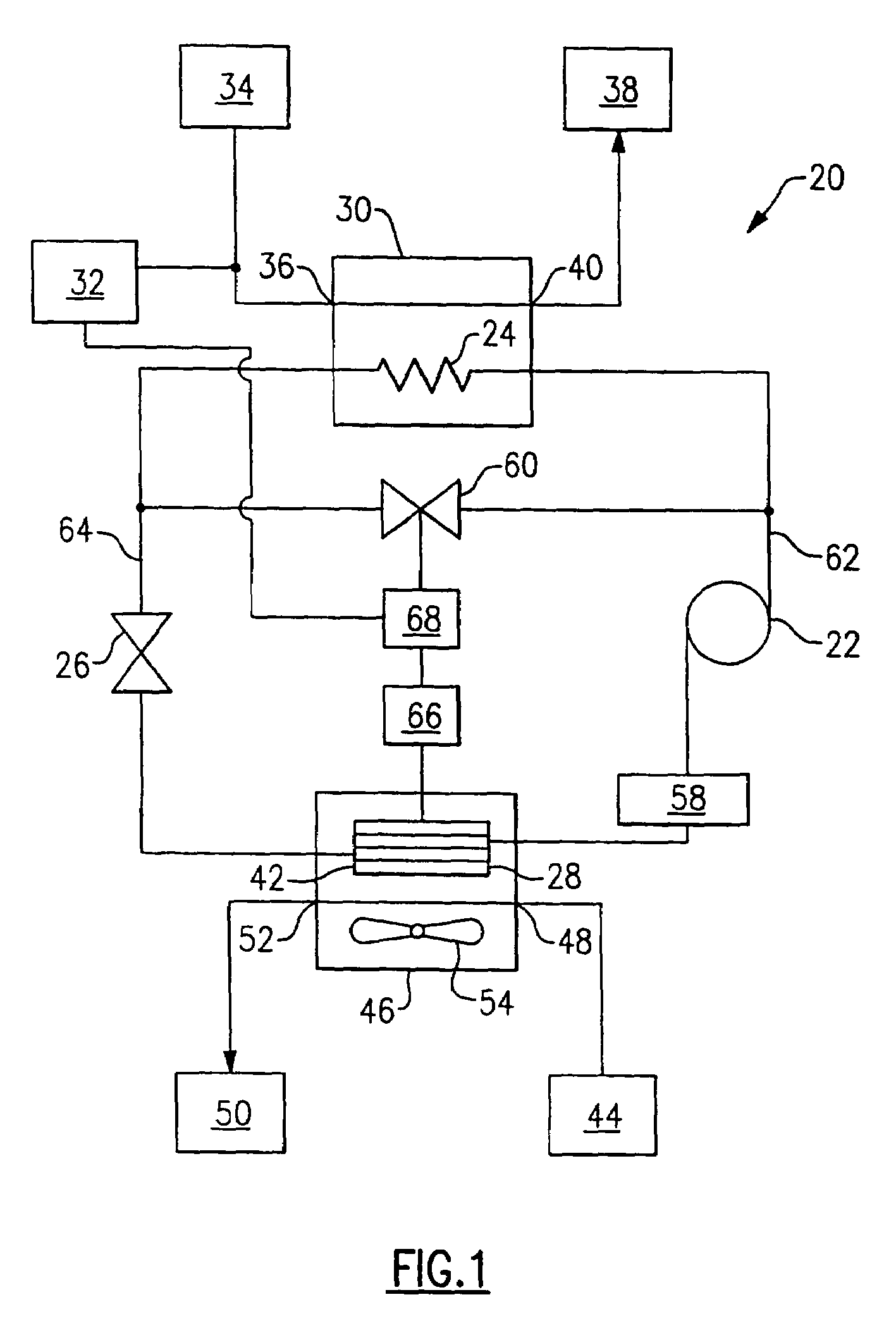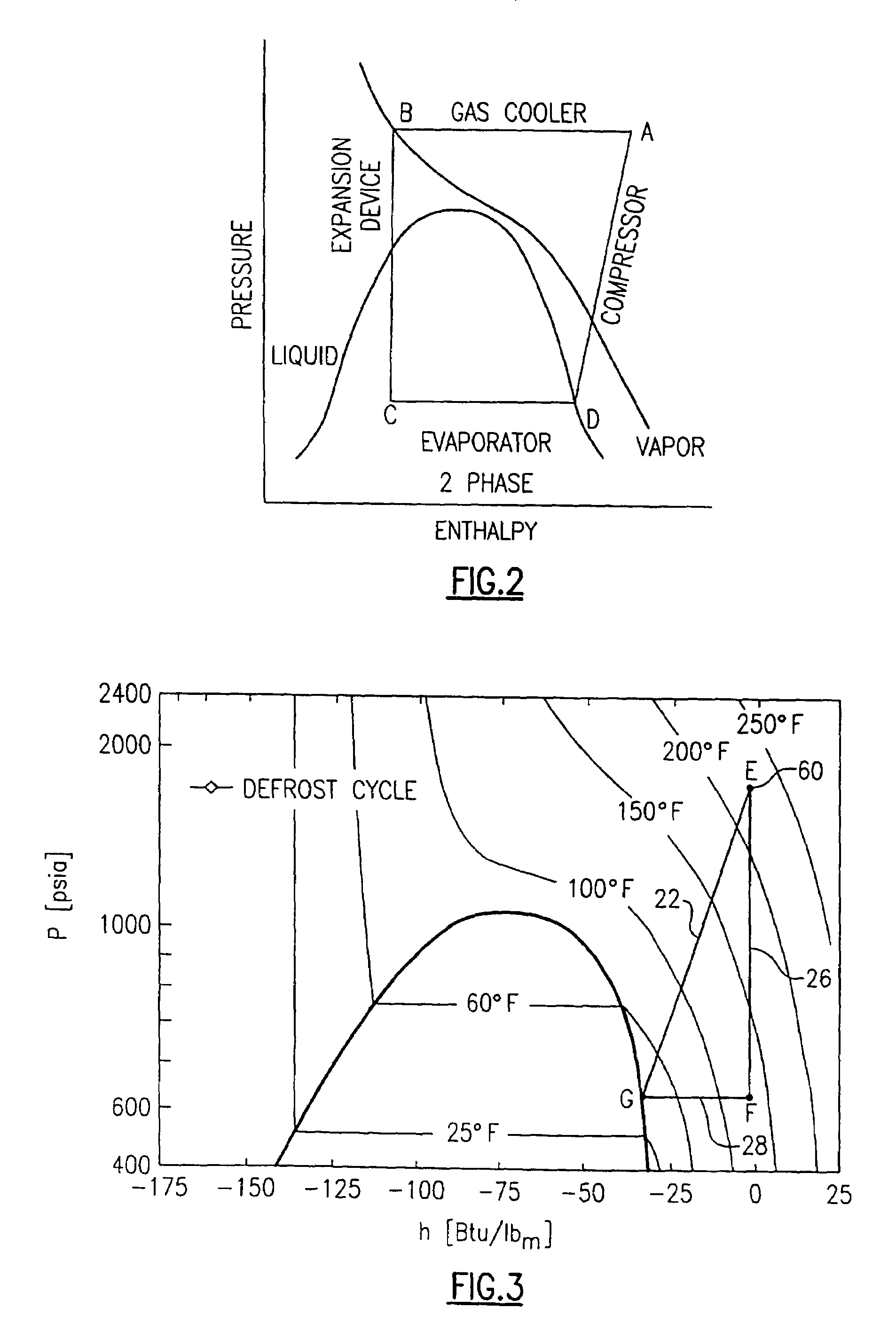Defrosting methodology for heat pump water heating system
a technology of water heating system and defrosting method, which is applied in the direction of defrosting, domestic cooling apparatus, application, etc., can solve the problems of reducing the airflow through the evaporator, and affecting the efficiency of the system
- Summary
- Abstract
- Description
- Claims
- Application Information
AI Technical Summary
Benefits of technology
Problems solved by technology
Method used
Image
Examples
Embodiment Construction
[0021]FIG. 1 illustrates a vapor compression system 20 including a compressor 22, a heat rejecting heat exchanger (a gas cooler in transcritical cycles) 24, an expansion device 26, and a heat accepting heat exchanger (an evaporator) 28.
[0022]Refrigerant circulates though the closed circuit system 20. Preferably, carbon dioxide is used as the refrigerant. Although carbon dioxide is described, other refrigerants may be used. Because carbon dioxide has a low critical point, systems utilizing carbon dioxide as a refrigerant usually require the vapor compression system 20 to run transcritical.
[0023]When operating in a water heating mode, the refrigerant exits the compressor 22 at high pressure and enthalpy. The refrigerant then flows through the gas cooler 24 and loses heat, exiting the gas cooler 24 at low enthalpy and high pressure. A fluid medium, such as water, flows through a heat sink 30 and exchanges heat with the refrigerant passing through the gas cooler 24. In the gas cooler 24...
PUM
 Login to View More
Login to View More Abstract
Description
Claims
Application Information
 Login to View More
Login to View More - R&D
- Intellectual Property
- Life Sciences
- Materials
- Tech Scout
- Unparalleled Data Quality
- Higher Quality Content
- 60% Fewer Hallucinations
Browse by: Latest US Patents, China's latest patents, Technical Efficacy Thesaurus, Application Domain, Technology Topic, Popular Technical Reports.
© 2025 PatSnap. All rights reserved.Legal|Privacy policy|Modern Slavery Act Transparency Statement|Sitemap|About US| Contact US: help@patsnap.com



